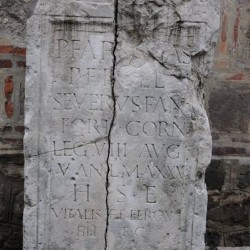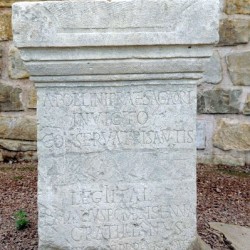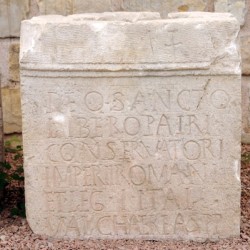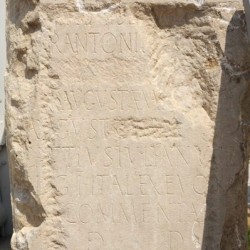Novae (Svishtov)
Q2257083Novae (Greek: Νοοῦαι): Roman legionary base along the Lower Danube, modern Svishtov in Bulgaria.
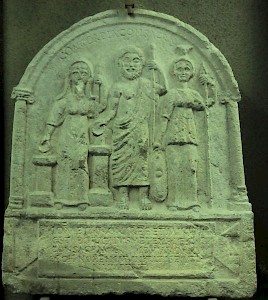
The Romans had been interested in the Balkans for quite a long time when, at the beginning of our era, they reached the Lower Danube. In the Illyrian Wars, they had fought themselves from the Dalmatian coast to what is now called Serbia. Arriving from the west, they reached the Danube near Singidunum (Belgrade) in about 35 BCE. A second way to invade the Balkan peninsula was from the south: after the Fourth Macedonian War (150-148 BCE), the Romans had a province bordering on the Aegean Sea, and because they had to defend it, they moved up north. The area along the Lower Danube, called Moesia Inferior, was added to the Empire at the beginning of our era.
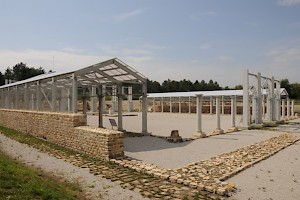
The first stage of the Roman occupation is still poorly understood. (Even the origins of the name “Moesia” are unknown.) It seems, however, that legions were active along the Lower Danube; the Fourth Legion received its surname “Scythian” no doubt for fighting in this area. Novae was one the bases and may have been founded as early as 30 CE.
The main archaeological site, however, appears to have been occupied in 46 or 47, when the emperor Claudius ordered the annexation of Thrace. From now on, the Rhine and the Danube, being natural frontiers, were the Empire's northern border zone (the limes). The base at Novae, built out of wood by the Eighth Legion Augusta, measured some 485 x 365 meters and was on a high terrace on the southern bank of the Danube, four kilometers east of modern Svishtov.
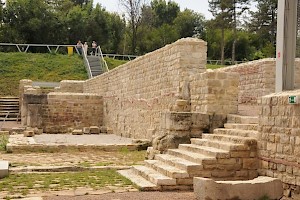
Unlike most Roman fortresses and forts, the terrace on which Novae was built, was not a fully level field. The legionary base was built on a slope, which the engineers converted into two levels: coming from the north, one could proceed to the headquarters, but one had to climb a staircase if one wanted to go further south.
After the year of the four emperors (69), the Eighth Legion was transferred to Argentoratum (modern Strasbourg in France) in Germania Superior and the base at Novae was handed over to the recently created First Italian Legion.

Not much later, the new soldiers started the reconstruction of Novae. It was, at the end of the first century, not uncommon to rebuild parts of fortresses of stone. Archaeologists have established that after the Claudian Army Reforms, legionary bases and auxiliary forts became increasingly permanent. Novae is no exception, but there may have been a special urgency: north of the Danube, king Decebalus of Dacia was becoming aggressive. War started in 85 and was to last until 106.
After the Romans had annexed Dacia, a tranquil period followed. The civil settlements around the military base appear to have expanded and a road was built to the south, to Nicopolis and Augusta Traiana. Most inscriptions appear to date from the second and early third century, and their quantity is evidence for the prosperity of Moesia Inferior in this age.
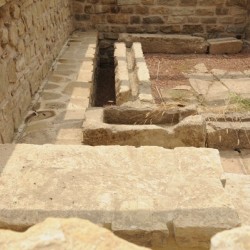 Novae, Latrine |
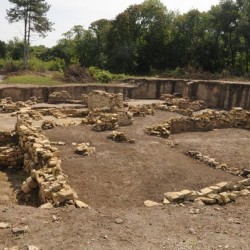 Novae, House of a tribune |
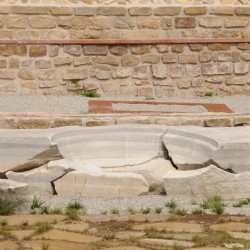 Novae, Byzantine baths, Basin |
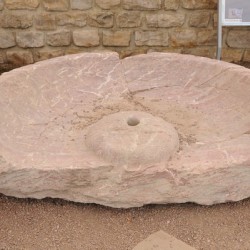 Novae, Principia, Water basin |
By the mid-third century, however, the tribes on the other side of the Danube became restless again and it took some time before the Roman army regained uncontested control of the area. When they did, at the end of the third century, Dacia was lost and many immigrants - both Romans from Dacia and barbarian migrants - had been given land along the Danube. Just like the original population of Moesia Inferior, the last-mentioned people became romanized. Roman order was restored. The people even converted to Christianity when this religion spread across the Empire in the fourth century.

New tribal coalitions, however, were formed, like the Tervingi. The soldiers of I Italica must have taken part in the emperor Valens' operations in former Dacia in 367-369. A peace treaty was concluded but several years later, in 376, the Tervingian leader Fritigern, who was afraid of the approaching Huns, asked permission to settle his people south of the Danube. Although Valens granted this, the situation deteriorated, and in 378, the Tervingians and Romans clashed at Adrianople. The Romans were defeated and their conquerors, now increasingly often called Visigoths, started to wander through the Empire.
In this age, Novae's walls were expanded: the citizens were allowed to live within the security of the fortress. It comes as no surprise that a church was built next to the headquarters, some 46 meters long and 24 wide; this place of worship was, over the next two centuries, gradually expanded with additional apses and a baptistery.
In the fifth century, the Ostrogoths settled in this area. For a while, Novae was their capital. Although their leader Theodoric eventually invaded Italy, many of his people stayed behind, as can be deduced from one of the cemeteries. Still, Rome remained in control of the area, and we know that the emperor Justinian (r.527-565) improved the defenses.note The last references to the garrison of Novae are from the early seventh century.
Literature
- A.B.Biernacki e.a., “The Large Legionary Thermae in Novae (Moesia Inferior) (2nd - 4th cent.A.D.)” in: Novae, Studies and Materials 5 (2016) 536 ff
- A.B. Biernacki & R. Czerner, “The Bishopric of Novae (Moesia Secunda) 4th-6th Cent” in: Acta XV Congressus Internationalis Archaeologiae Charistianae, Toleti 8-12.9.2008, Episcopus, Civitas,Territorium, Pars I (2013) 895-914
- A.B.Biernacki, & E. Klenina, “The Labrum from the Large Legionary Bathhouse of Novae (Moesia Inferior)” in: Archaeologia Bulgarica 20/2 (2016) 45-56
